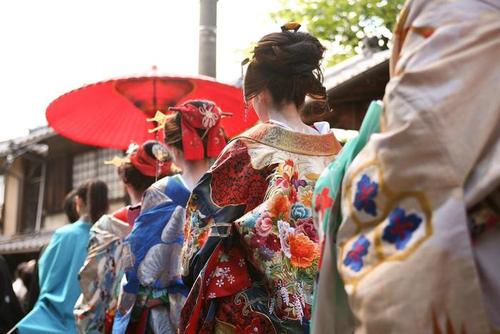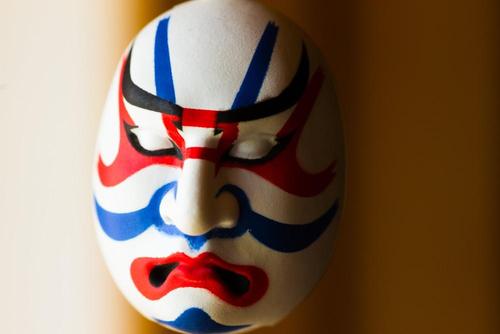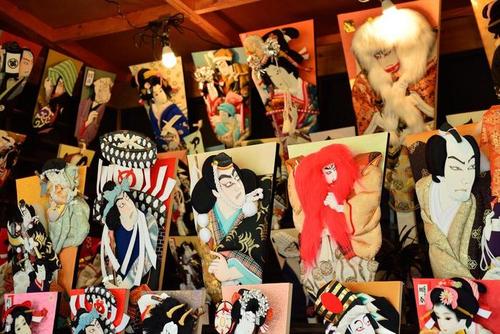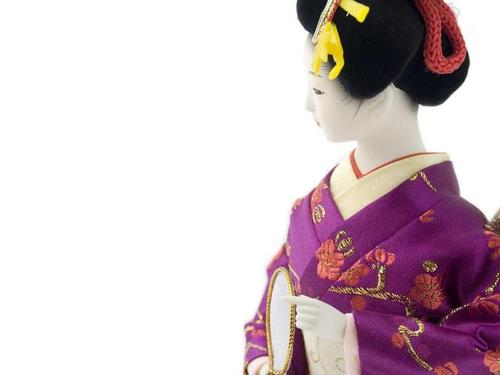Kabuki is one of Japan's traditional performing arts that is popular not only in Japan but also around the world. Some people may have heard about the appeal of Kabuki from people overseas and are thinking about going to see it again.
By keeping a few points in mind, you can enjoy the world of Kabuki even more. Here, we provide easy-to-understand explanations of the meanings behind Kabuki costumes and makeup, as well as the roles they play.
Please use this as a reference for introducing Japanese culture to the world!
Kabuki, a world-renowned Japanese theater, and the costumes that adorn its stage

The costumes used in Kabuki are lavishly decorated, and the vibrant colors and unique makeup create a beautiful, extraordinary world.
The worldview of Kabuki has captivated people from overseas and influenced the image of Japan from abroad. Here we will introduce some basic trivia about the costumes that adorn the Kabuki stage.
Basic trivia about Kabuki costumes
Kabuki, a performing art that developed during the Edo period, primarily uses kimonos as costumes. In addition to kimonos that are still worn today, such as yukata and hanten, samurai costumes, which consist of a hakama and jacket set called kamishimo, and sometimes costumes with innovative designs that evoke fantasy creatures, are also used.
Kabuki is also divided into "Kyogen," which shows theatrical performances, and "Buyo," which shows dancing, and the costumes used vary depending on whether they are acting out a realistic story based on the culture of the time, or expressing fantastical dancing or masculinity.
A particularly popular Kabuki costume is the "Oiran"
Among the costumes used in Kabuki, the gorgeous kimonos worn by courtesans are particularly popular. The uchikake worn in scenes such as the courtesan procession is decorated with gold and silver embroidery, and the large "chopping board obi" hanging down in front and the double-layered uchikake are so beautiful that just looking at them is enough to make you enchanted.
The unique makeup, "kumadori," has its own unique characteristics, just like the costumes.
Along with the costumes, Kabuki makeup is also a major feature. The unique makeup, known as "kumadori," also serves to emphasize the emotions and facial expressions of the characters.
Red kumadori expresses courage and justice, blue kumadori expresses cruelty and evil, and brown kumadori is used for imaginary creatures such as monsters and demons.
Must-see Kabuki Costumes: Historical and Sewamono Costumes

In addition to plays and dance, Kabuki is also divided into "jidaimono" and "sewamono."
The differences between the costumes used in historical plays and domestic plays are as follows:
What are period costumes and their characteristics?
Kabuki period pieces are what we would call "period dramas" today. In the Edo period, when Kabuki was popular, period pieces were performed that took place before the Edo period, such as the Muromachi and Heian periods, and so costumes were often distorted.
What are Sewamono costumes and their characteristics?
Kabuki sewamono are "modern dramas" from the Edo period. Because they are set in the same period as the people who came to see Kabuki in the Edo period, they use more realistic costumes than period pieces.
We can also learn about the customs and culture of the Edo period from the costumes and accessories worn by the characters in domestic dramas.
Is it true that you can tell what kind of characters a Kabuki actor is by their costumes?

Kabuki costumes have different characteristics depending on the character. The main Kabuki roles and the characteristics of their respective costumes are as follows:
Tachiyaku (leading actor)
In Kabuki, tachiyaku refers to male roles. The basic costume for male roles is a kimono and hakama, which play the same roles as a modern shirt and pants, respectively. Haori and hakama are the formal attire of townspeople, and kamishimo is the formal attire of samurai.
Another characteristic of the Edo period is that, because extravagant decorations were prohibited, the costumes of the samurai who appear in domestic dramas are modest, while the costumes of the samurai in period dramas are extravagant, featuring gold and silver embroidery.
antagonist
The term "villain" refers to the "villain role" that appears in Kabuki. In addition to distinctive makeup such as "akattsura" (red face) and "namazukuma" (catfish folds), wigs such as "ende" (swallow hands) and "oji" (prince) are also typical costumes for villain roles.
Onnagata (female role)
Onnagata literally means female roles.
In Kabuki, where all the characters are played by men, the onnagata actors are given special attention to make them appear more feminine, with features such as long furisode kimonos, trailing hems, and long, hanging obi sashes.
Onnagata actors wear a wide variety of costumes in both historical and domestic plays, and there are many small details, such as the way the obi is tied, which differs depending on the role.
There are obi tyings that express the character's personality, so if you have some knowledge of kimono, you may be able to enjoy Kabuki even more.
summary

Kabuki is one of Japan's most representative performing arts, and is also popular overseas due to its unique makeup and beautiful costumes.
The costumes have various characteristics depending on the performance and role, so even kabuki novices can enjoy watching, but learning some little trivia can also be a great way to introduce Japanese culture to people overseas.
This article has been partially re-edited by KARUTA from an article originally published on "Nihongo Biyori."
Any unauthorized reproduction or use of the contents, text, images, illustrations, etc. of this website is strictly prohibited.
